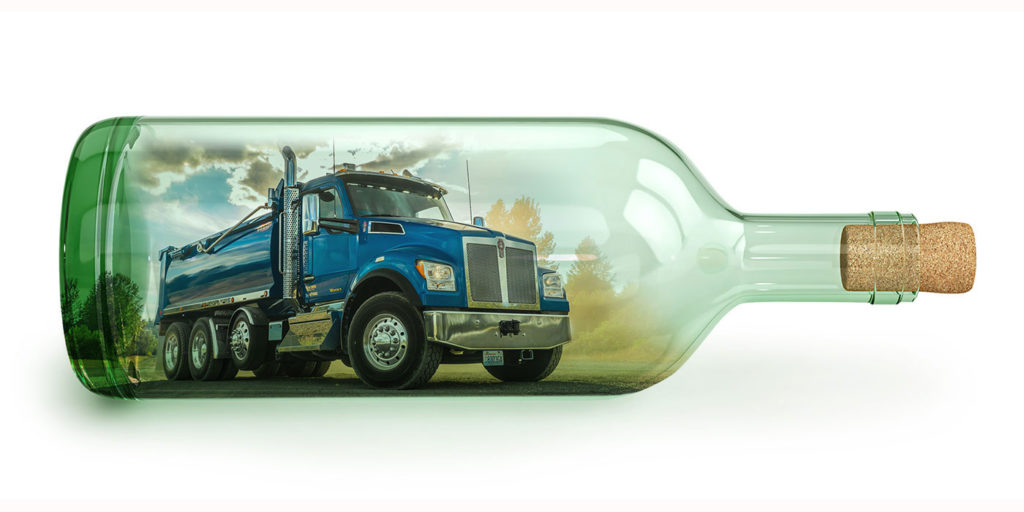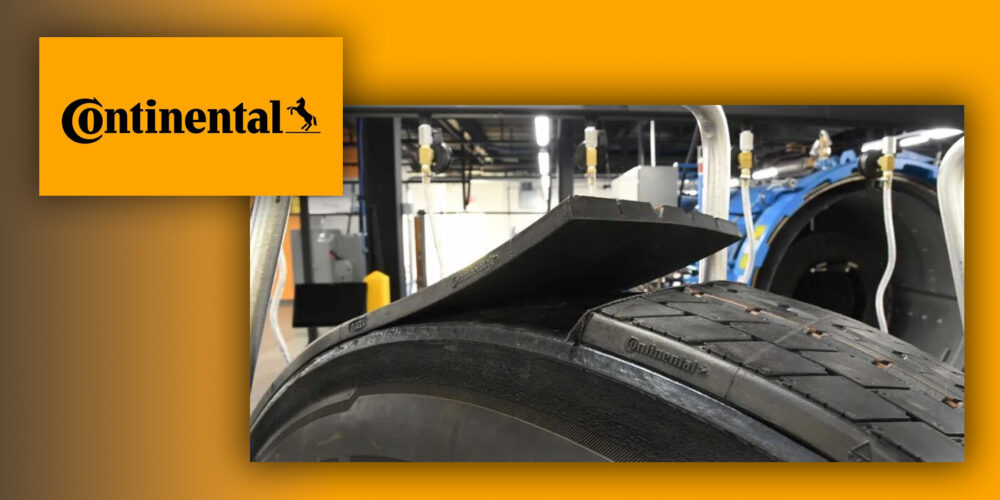If you have ever found yourself with your hands on your knees, nose three inches from a model ship in a glass bottle, you have no doubt silently contemplated the same question everyone else has in this position – how did they possibly build that? It begins with preparation. As each combination of ship, bottle and builder is unique, each project must be planned step by step for countless, arduous hours.
If you’ve spent even one minute spec’ing trucks for a vocational fleet operation, you surely understand the similarities. Vocational trucks are built to tackle jobs other trucks would find impossible, and each combination of truck, job and fleet is just as unique. So, it pays to put in the hours ahead of time spec’ing every component to go above and beyond no matter the situation.
Acting as the foundation of the truck, among the first components to consider is the chassis. As the rest of the truck is literally riding on getting this step right, fleet managers have a swath of minute details they must consider. International Truck’s director of severe service product marketing, Bruce Vasbinder, runs through a basic checklist:
“First, customers need to understand the intended application of the truck and its usage, including if they intend to tow a trailer. They need to be aware of local laws and regulations for this type of vehicle, especially bridge laws in their intended operating area. When talking about the application, one important factor to consider is whether the vehicle will be used on road, off road or both. If the application includes off road usage, you may need to consider all-wheel drive.
“The next factor to consider is the axle weight rating, which will change depending upon the size of the vehicle and its intended load,” Vasbinder continues. “Is it a little dump truck? A big dump truck? If the overall weight capacity is significant, you may need lift axles. The ability to provide power to the body via a power take-off [PTO] needs to be understood at the initial chassis purchase to enable body integration and be less costly in the long run. Lastly with vocational vehicles, the chassis components scale with the size of the vehicle. The bigger the truck, typically the larger the required chassis and powertrain components to do the job, be reliable and have a longer vehicle life.
Yikes – that’s quite the “basic” list. But, to guide you through this process, you can consider your dealer of choice your new best friend. Put them on speed dial.
“There are a lot of moving parts, but the biggest thing is working with your dealer, knowing what the application is and what the maximum load on the chassis may be,” he adds. “Are you going to pull a trailer? That brings in even more things to consider like electronic stability control.”
Tried and true? No – it’s new!
Don’t think just because you’ve spec’d for an application in the past that the same configuration will continue to work tried and true.
“People often spec what they have always spec’d using the ‘if it ain’t broke, don’t fix it’ approach,” says Ryan Breezee, Kenworth vocational marketing manager. “However, truck designs are always evolving and it’s a good idea to make sure that the spec will be fine-tuned to maximize payload, rather than just making sure the body will fit on the back; weight distribution is often overlooked.”
Breezee says as fleets’ needs change, the company gives customers different ways to work with the manufacturer.
“While [maximizing payload] seems like a very complicated process, Kenworth offers a spec’ing tool can help our dealers easily dial in weight distribution to get the best possible payload capacity,” Breezee adds. “And, not a lot of customers know that we have an engineering group that actually reviews incoming orders and makes recommendations based on the customer’s application. Often it’s assumed that dealers and customers are completely on their own when spec’ing a truck.”
Tony Sablar, Peterbilt’s vocational market segment manager, says it’s important for fleet managers to find a dealer who can connect them with truck body builders to understand how the chassis can be incorporated with each individual body design.
“We look at the chassis as part of the overall truck system,” Sablar says. “We work closely with body builders to understand their body designs, where they provide additional rigidity, where the body CG [center of gravity] is on the truck so we have reinforcements and proper weight distribution, where we need to provide clearance for body components … all together, this provides the customer the best combination for their fleet.”
International’s Vasbinder says in his experience, the most common error fleet managers make when spec’ing the chassis is not taking the body builder into consideration.
“I don’t think they spend enough time on integration and chassis configuration as it relates to ease of integration at the bodybuilder, and ultimately, long-term reliability and total cost of ownership of the vehicle,” he says. “Often, people will buy a stock chassis and send it to the body builder. These chassis may not be configured to accept the intended body. The result is extra time and additional expense to have components such as air tanks or battery boxes moved that are in the way.
“In working with the dealer, the customer can configure the chassis, so body integration is much easier,” Vasbinder adds. “At International, we work with many bodybuilders to ensure we have a chassis configuration that is optimized for their body. The configurations ensure components are located at our factory and do not need to be moved or altered.”
Connectors, corrosion and capacity
There’s an aspect of chassis design that deserves more respect from fleet managers: the electrical system.
The traditional way of handling body integration is to splice into the chassis wiring, but the experts say this is a mistake. This technique likely means you have a circuit failure waiting in the wings, often due to corrosion.
“Many new factory-installed and aftermarket technologies are being incorporated into vocational trucks, so it is important to properly connect the aftermarket systems to the chassis’ electrical system using the designated connectors on the chassis, to avoid reliability concerns,” Peterbilt’s Sabler says. “The old practice of splicing into the chassis harness to look for a signal is detrimental to many of the technology systems, which is why we provide convenient connection points to receive all the information that body integrators need for intended body function.”
The trick is to spec the connectors correctly, the first time, before the truck leaves the factory. If you don’t, it can involve a lot of rework to add them after the fact, Kenworth’s Breezee says.
This is one more reason to involve the dealer/bodybuilder right out of the gate.
“It’s important to understand whether the bodybuilder is going to communicate with the truck over CAN Bus/J1939 or a hardwired connection,” Breezee says. “Kenworth offers both multiplexed and hardwired connectors to make it as easy as possible to connect to the truck, no matter what communication method the body builder decides to use.”
Another issue that comes about when splicing is not knowing if the source circuit has capacity for the original chassis function as well as the increased load for the body on the back of the chassis, says International’s Vasbinder. Ignoring this brings about more opportunities for electrical system failures.
“International handles this integration task with remote power modules [RPM] inside the vehicle, which is how we’ve done it since introducing multiplexed vehicles in 2001,” he says. “The RPM gives the body builder the ability to tap into a device that provides power, and input and output signals to ease programming functions associated with the body on the back of the chassis. By utilizing this system, the body integrator removes the possible points of failure associated with splices and provides a convenient and easy way to integrate and troubleshoot the body.”
International’s Diamond Logic System, which the company offers to deliver onboard diagnostics and automation, can also be tied into a vocational vehicle’s electric integration system, and allows a fleet to apply safety constraints on the vehicle based on what the truck is doing.
“Think of the truck as a data highway, which sends messages back and forth. We can tie into this highway, grab information and make conditional constraints based upon the body or desired safety condition,” Vasbinder says. “For example, if a dump truck body is up dumping a load, we can limit the speed to a predetermined speed like 10 MPH to prevent any accidents.”
Spend the time up front and form your plan of attack with the dealer and builder. You would never construct a ship in a bottle using only your fingers; success depends on using the right tools. Take advantage of the many factory options available, and it’s bound to pay off in increased uptime and higher ROI down the line.














